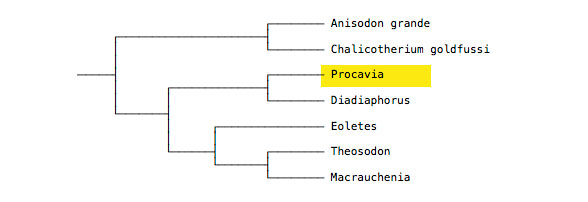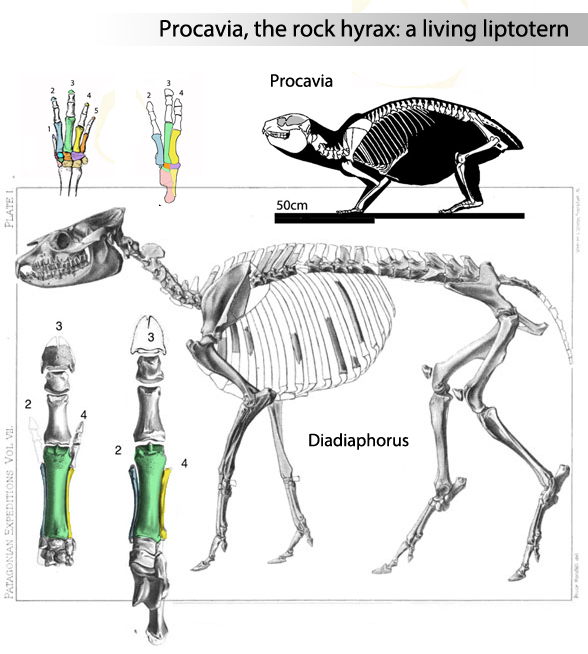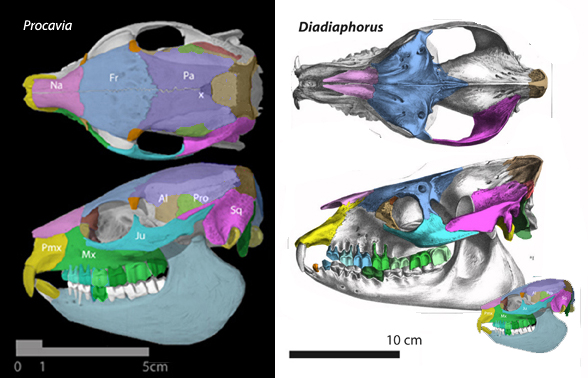According to Wikipedia – Liptoterna
“Litopterna is an extinct order of South American native ungulates that lived from the Paleocene to the end of the Pleistocene-early Holocene around 63 million-12,000 years ago, and were also present in Antarctica during the Eocene.”
According to Wikipedia – Chalicotheriidae
“Chalicotheriidae is an extinct family of herbivorous, odd-toed ungulate (perissodactyl) mammals that lived in North America, Eurasia, and Africa from the Middle Eocene until the Early Pleistocene.“

Figure 1. Subset of the LRT focusing on Procavia and relatives among the Chalicotheriidae and Liptoterna.
Recent housekeeping
in the large reptile tree (LRT, 2320 taxa, subset Fig 1) now nests the rock hyrax, Procavia (Figs 2, 3), within and between these two clades alongside extinct Diadiaphorous (Figs 2, 3).
That means both clades are no longer extinct. They both have a living representative: Procavia. All are basal perissodactyls in the LRT.
According to Wikipedia – Hyrax
“They are superficially similar to marmots, or over-large pikas, but are paradoxically much more closely related to elephants and sea cows.”
This is a genomic assessment, yet another reason to distrust deep time DNA studies. In this case the closest relatives to hyraxes are extinct, so taxon exclusion is also at fault here because extinct liptoterns and chalicotheres are necessarily excluded.
Marmots are large ground rodents.

Figure 1. Skeletons of extant Procavia of Africa and Diadiaphorus of Miocene Argentina.
This phylogenetic connection was first recovered
here in 2019 without much fanfare. Today a bit of fanfare and comparative graphics.
BTW
elephants and sea cows are no longer related to hyraxes in the LRT. They now nest closer to stylinodontid members of the Carnivora.

Figure 2. Skull of extant African Procavia and Miocene Argentinian Diadiaphorus.
The addition of African Procavia
to South American Liptoterna and Northern Hemisphere chalicotheriidae means this clade likely originated in Africa shortly after the asteroid impact, then spread across the Eastern Hemisphere, then later crossed the Bering Strait into the Western Hemisphere.
References
wiki/Litopterna
wiki/Procavia
wiki/Hyrax
